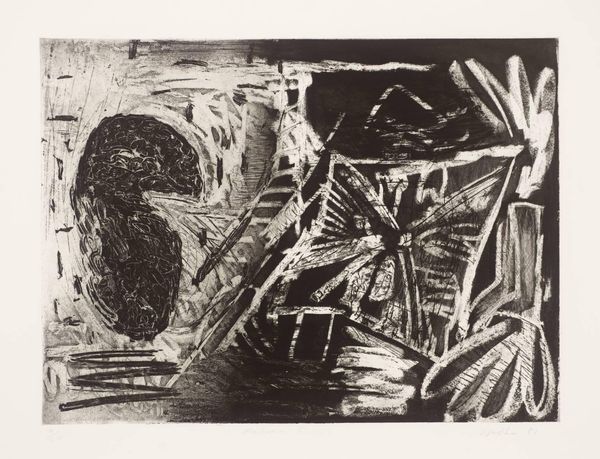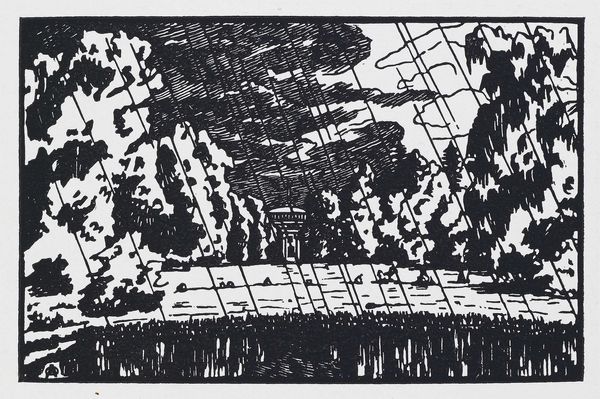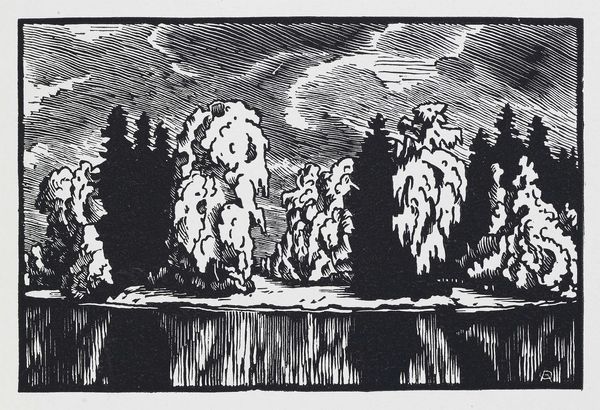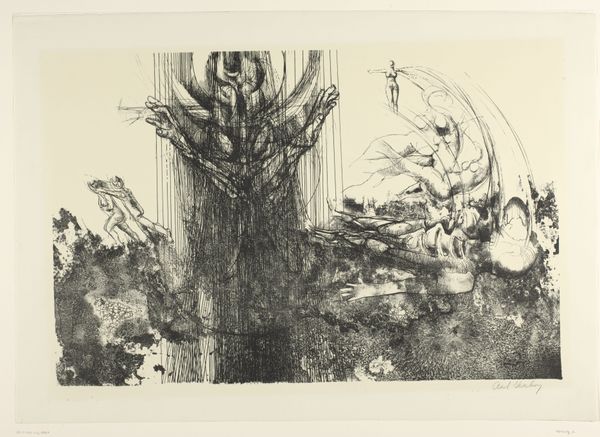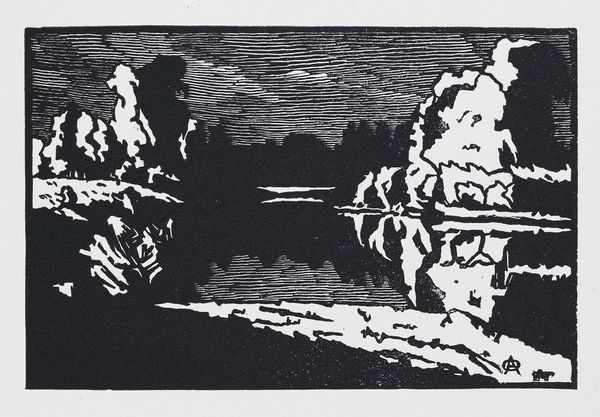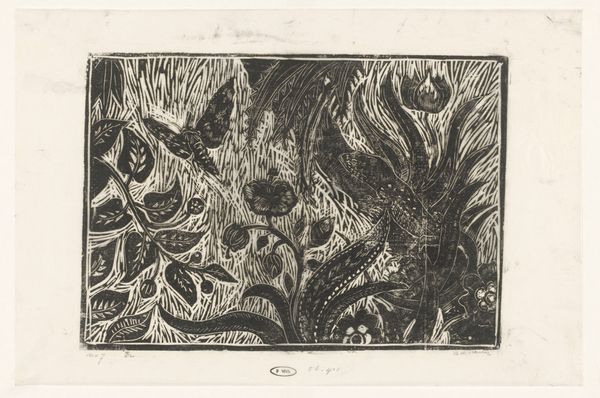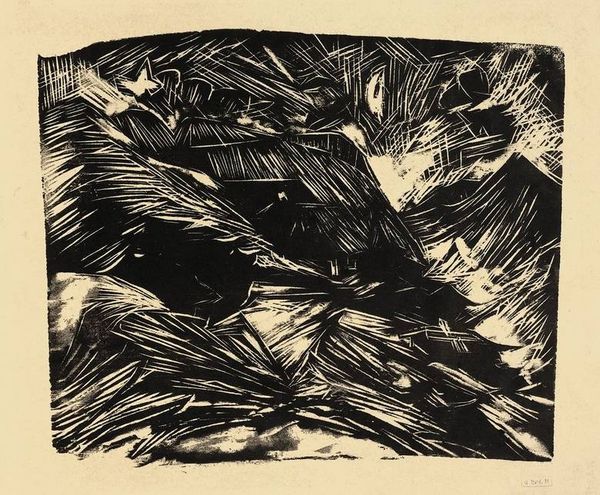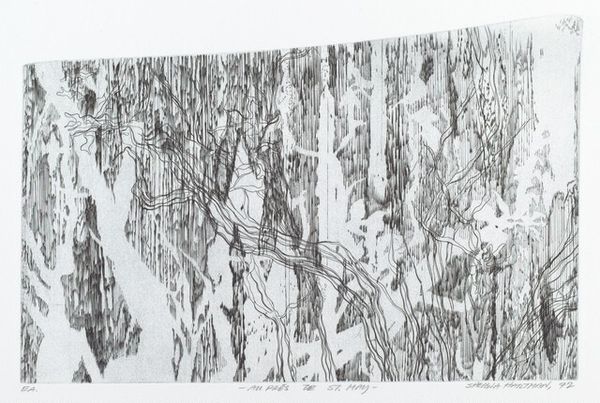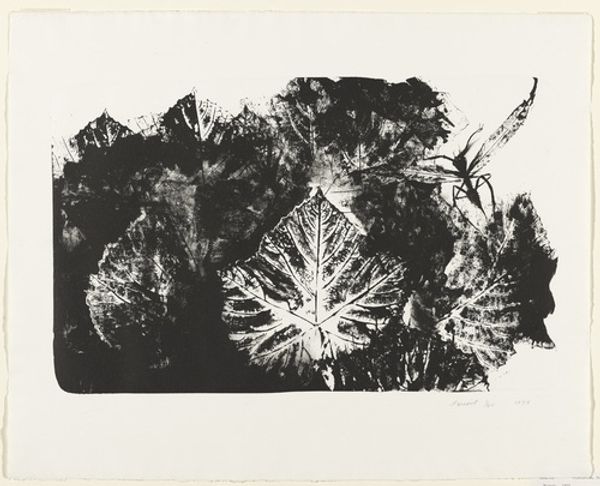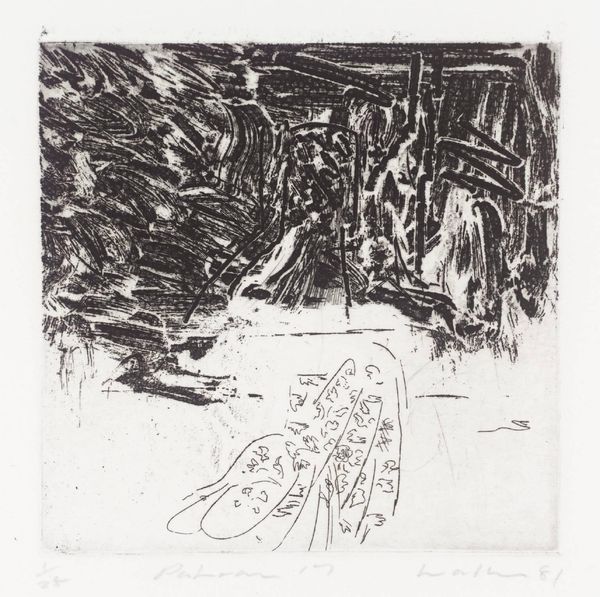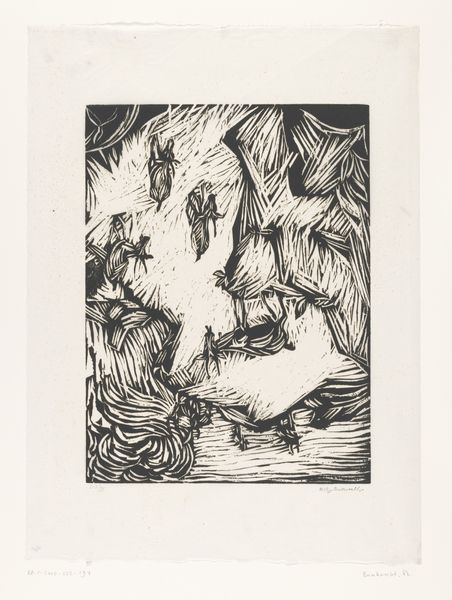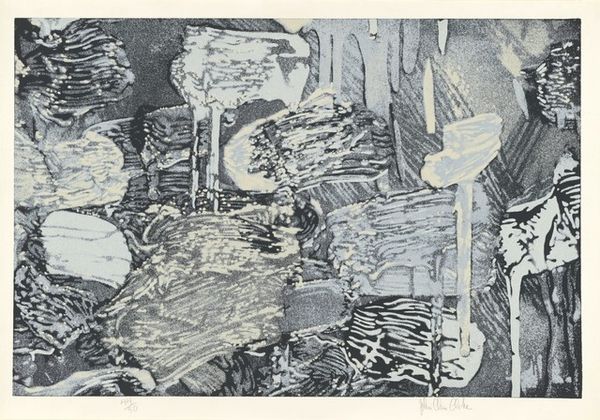
print, woodcut
# print
#
landscape
#
woodcut
#
russian-avant-garde
#
modernism
Copyright: Public domain US
Editor: This is "Group of trees near the \"White Birch,\"" a woodcut print by Anna Ostroumova-Lebedeva, from 1923. There's a dramatic feeling created by the contrast of dark and light and the heavy rain. What can you tell me about it? Curator: This work speaks volumes about the radical spirit of the Russian avant-garde and the role of women artists within it. Looking at it through a contemporary lens, I'm drawn to how Ostroumova-Lebedeva uses the landscape—typically a neutral or passive subject—to convey a sense of upheaval and transformation. The rain, depicted with such stark, aggressive lines, could be seen as a metaphor for the revolutionary changes sweeping through Russia at the time. Editor: That's an interesting perspective. I initially saw it as just a landscape, but viewing it through the lens of revolution gives it a much more profound meaning. Do you think she was consciously making a political statement? Curator: It's not always about conscious intention, but rather about the artist’s position within a specific historical and social context. As a woman artist working in a revolutionary period, her gaze, her choice of subject, and her stylistic approach are all inherently political. The way she disrupts traditional landscape painting—reducing it to these stark black and white contrasts, the almost violent depiction of rain—it mirrors the societal disruptions around her. What do you make of the simplified forms and the overall mood? Editor: The simplified forms remind me of other modernist art, like Cubism. It makes me wonder if the choice of medium, a woodcut print, was significant too. It feels less polished, more raw somehow. Curator: Precisely. The raw quality of the woodcut aligns with the revolutionary ideals of breaking from the past and forging a new artistic language. And consider the accessibility of printmaking—it was a democratic medium, allowing for wider dissemination of imagery and ideas, in opposition to elite art forms like oil painting, limited to wealthy classes. How might her gender influence this choice? Editor: It gave her access to production on a massive scale. Thanks, I hadn't thought about that aspect. Curator: By considering these intersectional narratives, we gain a deeper understanding of how art reflects and shapes the socio-political landscape of its time, especially thinking of women's labor. Editor: I learned a lot! I'll never see landscape art the same way.
Comments
No comments
Be the first to comment and join the conversation on the ultimate creative platform.

